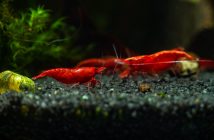Tridacna clams are some of the most interesting and colorful invertebrates we could put in our aquariums. They have a brightly colored and wildly patterend mantle, can retract into their shells when startled, and can even take up nitrate and free-floating particles when they are filter feeding. Another trick they can do is mass spawn in a reef aquarium, as can be seen in the video above from YouTube user “reefralf”. According to “reefralf”, this ocurrence is acutally a very common one for his reef. The clams apparently spawn at least three times a year and the event is usually brough on by some small change he makes in the aquarium. In this particular instance, the simple changing out of four metal halide bulbs is getting the credit for the spawning activity.
It’s not uncommon for a shift in water parameters or sudden changes in the aquatic environment to induce reproduction. Anemones have been known to split (their asexual form of reproduction) when stressed, corals usually reproduce after certain events, and as we can see here clams spawn after an alteration to their everyday environment. In most situations, mass spawning in the aquarium is an unsuccessul venture. There is usually only one sex present, meaning the eggs don’t get ferilized or the sperm don’t have anything to fertilize, but the situation of the spawning clams is a little different. Juvenile clams are often only male, meaning they only produce sperm. As they mature, however, clams start to produce eggs in addition to sperm, meaning they are hermaphroditic and can fertilize their own eggs. In theory, a single clam can reproduce successfully in an aquarium, but with all of the filtration and hungry reef life, it’s highly unlikely.
Despite this miracle in aquarium keeping, spawning clams actually presens a major problem, at least for some aquarims. As with any mass spawnin event, the eggs and sperm that are released will quickly start to degrade, fouling up the water quality in the process. “reefralf” states that his aquarium often clears up within two hours of the start of the spawning, but this is probably due to the relative volume of his aquarium and a more than capable filtration system. In the typical situation, however, the immense amount of material being released will quickly outpace and ovewhelm the aquarium equipment trying to filter it out. Some fish and corals will get a big meal from the ordeal, but a series of big water changes is a must in this situation. The water changes will remove the free-floating genetic material before it can die and cause a massive tank crash.
Tridacna Clams Spawning in Home Reef Tank
0
Share.





